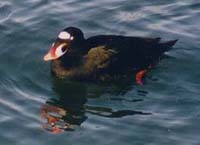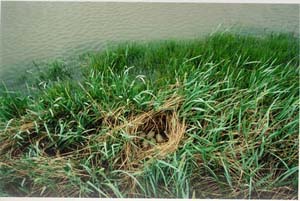
Nutrition and Timing of Nesting in Greater Scaup
Research on Sea Ducks


We found that Greater Scaup females employ an unusual strategy of nutrient acquisition and allocation for clutch formation, in comparison to other ducks. They store nutrients on breeding areas, delay initiation of clutch formation until nutrient storage thresholds are achieved, but paradoxically do not invest stored nutrients into eggs. Instead, nutrient stores are likely used during incubation, reducing the need for incubation breaks and the corresponding increase in nest predation risk. We also demonstrated, for the first time, the utility of using circulating levels of plasma yolk precursors as an indicator of reproductive status in waterfowl.
Dan Esler
Tony Williams
Kristen Gorman
Research Partners:
